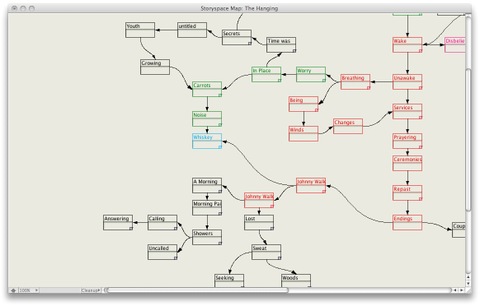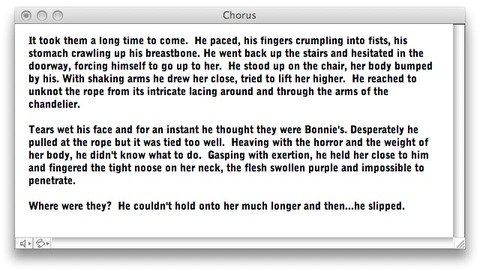As I look over the map to date of The Hanging, definitely early in its "work in progress" stage, I am reminded of the simile of puzzle for narrative, particularly when referring to a mystery story.
But there is a visual likeness that is even more related to one’s working on a puzzle–at least from the writer’s perspective. Sections are forming as they make sense in their development; the one bright orange maple against the blue sky is pieced together and sits floating on a background of tabletop in the absence of the all-one-shaded blue sky. Perhaps from an edge of the maple a wisp of cloud continues, he too surrounded by blue-edged white pieces that end there–for the time being.
The borders of the puzzle are completed first by their telltale straight edge; this is the structure of the story, what it will encompass, who will take part in it and what will happen to them. The horizon may be pieced together next, the grey-green hills against the solid sky; a telling point of main conflict that runs through the work.
In Storyspace, I find myself following the path of least resistance when I’m not psyched up for the flow, focusing instead on completing the more obvious. The deer in the foreground of the puzzle, less than a dozen pieces of tawny grey. The coyote stalking him is next, a small patch of dirty golden yellow. Between them, an expanse of dull wheat-dry grass, for now, left open as the sky so the tabletop separates the two. This is where the bringing together, the solidifying factors must be filled in. Pieces of puzzle fitting together to make each separate island larger, more complete, extending outward until all reach and touch to form a complete image of story. And only now, when all the pieces are in place, can the coyote reach and kill the deer.


 This particular snippet isn’t particularly poetic, but then neither is the scenario. And it’s still a far cry from what it could be to establish its impact. But, word by word, forced to focus on this block of story only, it is changing, has changed from simple relation of events, into approaching the drama of the moment. Storyspace, with its breaking up a narrative into sections, encourages close reading. This is terrific for the writer; should be kept in mind as well that the reader may also experience this influence, meaning that the writing should shine, without, of course, impeding the flow of story or discouraging the need to click onward.
This particular snippet isn’t particularly poetic, but then neither is the scenario. And it’s still a far cry from what it could be to establish its impact. But, word by word, forced to focus on this block of story only, it is changing, has changed from simple relation of events, into approaching the drama of the moment. Storyspace, with its breaking up a narrative into sections, encourages close reading. This is terrific for the writer; should be kept in mind as well that the reader may also experience this influence, meaning that the writing should shine, without, of course, impeding the flow of story or discouraging the need to click onward. The Lost Children: A Charity Anthology
The Lost Children: A Charity Anthology